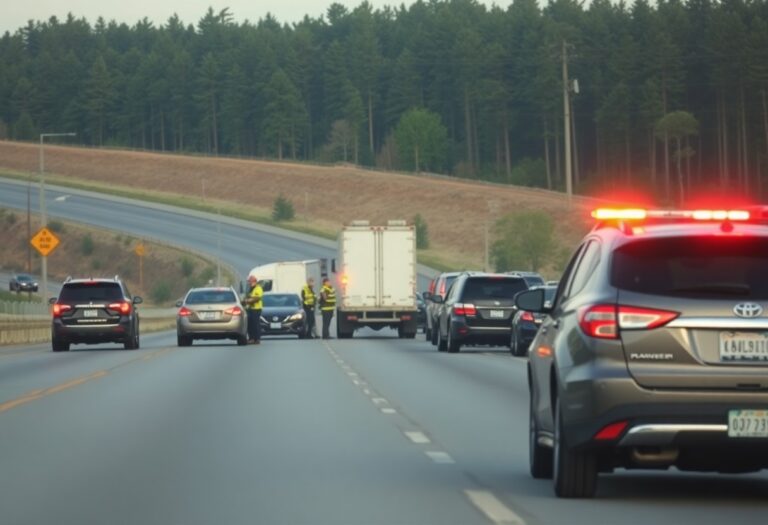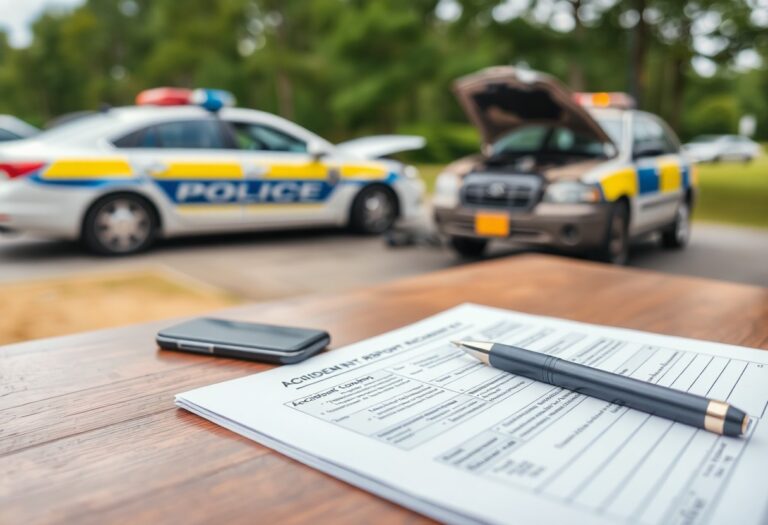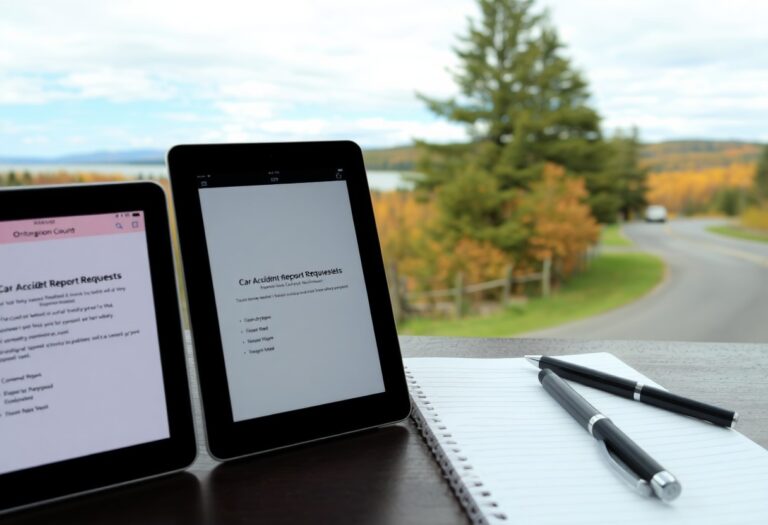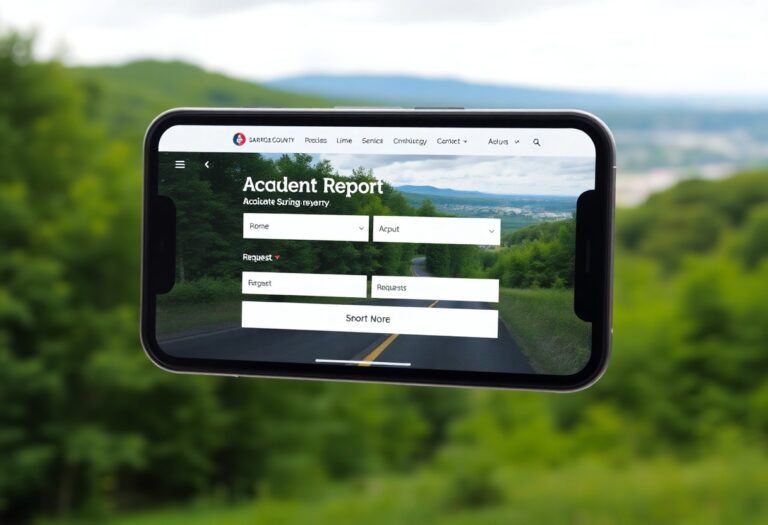Seneca County provides you with comprehensive support for obtaining crash reports, ensuring you navigate this process with ease. Whether you’re involved in an accident or need to file an insurance claim, understanding how to access your official crash report is vital. In this blog post, you will learn about the necessary steps, required documentation, and important contacts to streamline your experience. Your safety and peace of mind are our top priorities, and we are here to guide you through every stage of obtaining your crash report.
Crash Report Fundamentals in Seneca County
Understanding crash report fundamentals ensures you’re well-equipped to navigate the aftermath of an accident in Seneca County. These reports serve as vital records documenting the details surrounding a collision, including involved parties, vehicle information, and damages incurred. Having access to and comprehending these reports can influence insurance claims, legal proceedings, and personal understanding of the events that transpired.
Defining the Purpose of Crash Reports
Crash reports serve multiple purposes, primarily offering an official account of collisions to aid law enforcement, insurance companies, and legal representatives. These reports can help you establish fault, assess damages, and navigate the claims process, providing vital evidence when disputes arise.
Legal Obligations and Reporting Requirements
The state mandates specific legal obligations regarding crash reports. New York law requires that any accident resulting in injury, death, or significant property damage be reported to the authorities within 10 days. Failing to file a report can result in penalties or complications regarding your insurance and legal matters.
Your legal obligations extend beyond just filing a report. If you are involved in a crash and fail to notify the police, you may face fines or even possible criminal charges, especially if the incident involves injuries. Additionally, if injuries occur, you are required to cooperate fully with the investigation and provide accurate information to law enforcement. Maintaining a clear and honest account is vital not only for your protection but also for ensuring accurate data for local authorities, which can lead to improved traffic safety strategies in the long run.
Navigating the Local Systems: How to File a Crash Report
Filing a crash report in Seneca County involves understanding local procedures. This guide breaks down the process for you, ensuring a smooth experience from beginning to end.
Step-by-Step Procedures for Filing
| Step | Description |
|---|---|
| 1 | Gather all relevant information, including driver details and vehicle information. |
| 2 | Contact the local police department to report the crash and request a report. |
| 3 | Obtain a copy of the police report once it’s available. |
| 4 | Complete the crash report form and include all required details. |
| 5 | Submit the completed report to the appropriate local authority. |
Essential Information Needed for Submission
Providing accurate information is vital for your crash report submission. Key details include date and time of the crash, location, involved parties, and a detailed account of what happened.
Your crash report must be thorough. Include specific names, addresses, and contact information for all drivers and witnesses. Additionally, record the circumstances leading to the incident, vehicle conditions, and any damages sustained. This will ensure that the report is complete and aids in any necessary follow-up actions or claims you may need to file.
The Role of Law Enforcement in Crash Reports
Law enforcement plays a critical role in the development of crash reports, as officers are often the first responders to the scene of an accident. They gather necessary data, including witness statements, vehicle information, and roadway conditions, ensuring a comprehensive account of the incident. By documenting these details accurately, law enforcement helps establish liability and provides a resource for insurance claims and potential legal proceedings that may follow. Their insights can significantly impact the outcomes of various claims you may pursue.
Insights into Officer Control and Documentation
Officers possess the authority to control the scene of a crash by directing traffic, securing the area, and ensuring safety measures are in place. Their documentation serves as a formal record of events that are often referred to in insurance claims and legal disputes. A detailed report from law enforcement can add weight to your case, as they utilize training to assess situations and validate the accounts of eyewitnesses.
Common Pitfalls in Law Enforcement Reporting
While law enforcement reports are invaluable, they can sometimes be plagued by inaccuracies or oversights. Officers may miss critical details, rely on anecdotal evidence rather than physical proof, or misinterpret statements made by you or witnesses. These issues can result in skewed data that does not accurately reflect the circumstances of the crash, potentially affecting your ability to recover damages.
For instance, a missing vehicle marker or an incorrect order of events can drastically alter the narrative of the crash report, leaving vital aspects unaddressed. You may encounter cases where officers hastily document their observations without exhausting all investigative measures, leading to gaps in information that could undermine your claims later. Understanding these common pitfalls enables you to gather supporting evidence and follow up with law enforcement to clarify or correct any inaccuracies in their reports. This proactive approach can bolster your case and protect your interests as you navigate the aftermath of a collision.
Getting the Most from Your Crash Report: Data Access and Retrieval
Maximizing your access to crash report data involves understanding the systems in place and how to efficiently retrieve this information. By knowing where to look and whom to ask, you can extract valuable insights from your crash report that may aid in your insurance claims, legal proceedings, or personal records. Identifying critical data such as the date of the incident, involved parties, and witness testimony can strengthen your case and clarify details.
Where to Request Copies of Reports
You can request copies of your crash report from the Seneca County Sheriff’s Office or the local police department that responded to the incident. Typically, request forms are available online or at their offices. Providing basic information, such as your name, incident date, and accident report number, will expedite the process of obtaining these documents.
Understanding Report Revisions and Updates
Crash reports may undergo revisions post-filing, which can affect the data contained within. Each version should be thoughtfully reviewed to capture any new details that may be added after the initial filing. Factors leading to updates include additional witness statements, corrections to statistical data, or newly uncovered evidence that emerges during the investigation.
In Seneca County, understanding the specific reasons for report revisions is imperative for ensuring that you are working with the most accurate information. For instance, if a new witness comes forward after your report has been filed, their input could lead to corrections that substantially change the context of the incident. Keeping track of version dates and requesting updated reports as they become available can prevent misunderstandings or misinterpretations down the line. Always cross-reference your records with the most current report to maintain clarity and accuracy in your dealings with insurance companies or legal advisors.
Maximizing Your Rights After a Crash: Legal and Insurance Perspectives
Understanding your rights following a crash is crucial for effective recovery and compensation. Legal frameworks dictate how claims are handled and define your responsibilities as well as entitlements. Engaging with legal professionals can guide you through the complexities of case law, demonstrating how your report impacts your negotiations with insurance companies and the legal system at large.
Legal Rights Related to Crash Reports
Your legal rights after a crash are closely tied to the information in crash reports. Obtaining and reviewing these reports is a vital step in asserting your rights, as they serve as official documentation of the incident. They can help establish liability, support your version of events, and provide necessary details for any legal action you may need to pursue.
Navigating Insurance Claims with Your Report
Insurance claims are primarily influenced by the information found within your crash report. This document outlines crucial details such as the involved parties, accident location, and any police findings that can substantiate your claim. An accurate report can streamline the claims process, fostering quicker resolutions and potentially higher compensation for damages incurred.
Utilizing the crash report effectively during your insurance claim can significantly enhance your experience. With the documented evidence on hand, you can challenge any discrepancies in account or liability presented by the insurance adjuster. For example, if the report indicates a traffic signal violation by the other driver, this can make a compelling case for liability, ensuring you receive justified compensation for vehicle repairs and medical expenses. Consistently referencing the crash report during discussions with your insurer provides a stronger foundation for your arguments and claims.
To wrap up
Considering all points, accessing step-by-step crash report support in Seneca County, New York, empowers you to navigate the aftermath of an accident effectively. You can rely on available resources and local agencies to assist you in obtaining the necessary documentation, ensuring your rights are protected throughout the process. This support not only enhances your understanding of the reporting procedures but also helps you to address any claims or legal matters confidently. By utilizing these resources, you can focus on recovery and moving forward.













